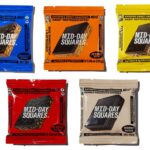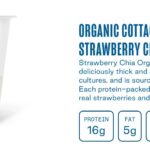$.50 off this Blog. The Role of Couponing in 2023
I hadn’t thought much about couponing until I was working on a project bringing up the idea in conjunction with some targeted sampling.
Couponing has long been a popular marketing strategy for companies looking to drive sales and build brand loyalty.
Today, most astute brand managers ask if couponing makes sense in your marketing mix. Does it promote trial or reward existing users? How can you measure efficacy?
And if you decide that couponing can play a role in your mix, should you use printed or digital coupons?
I decided to reexamine the pros and cons of printed and digital coupons and discuss couponing’s role in marketing fast-moving consumer packaged goods (FMCGs) like snack foods and physical products. Couponing has declined in the United States over the last decade, even when adjusted for inflation.
My Bias
I’m not a fan of couponing. I prefer to find other ways to invest those funds in the marketing mix for brand awareness and counterintuitive approaches to trial. Many arguments exist about how couponing still fits with some brands, particularly those serving older consumers. But there are better ways to spend the dollars invested, whether printed or digital.
Coupon Trendlines
According to data from the coupon processing company Inmar Intelligence, the total number of coupons redeemed in the U.S. decreased from 2.6 billion in 2011 to 1.8 billion in 2020, a decline of about 31%.
This decline in coupon usage has been attributed to various factors, including changes in consumer behavior, the rise of digital coupons, and the increasing popularity of other promotional offers, such as loyalty programs and personalized discounts.
However, despite the decline, coupons still play an essential role in many consumers’ purchasing decisions and can be an effective way for brands to attract new customers and build loyalty.
Printed Coupons: Pros and Cons
Printed coupons have been around for decades and remain a popular marketing tool for many companies. Here are some of the pros and cons of using printed coupons:
Pros:
Tangibility: Printed coupons can be physically handed out to customers, creating a stronger connection between the customer and the brand.
Targeting: Printed coupons can be mailed to specific households or distributed in specific geographic areas, making them a great way to target particular demographics.
Convenience: Printed coupons can be redeemed in-store, which is often more convenient for customers than navigating an online checkout process.
Cons:
Cost: Printed coupons require paper, ink, and distribution, which can add to a high price for companies.
Waste: Printed coupons that go unused can create waste, which can be environmentally damaging.
Difficulty in tracking: Printed coupons are challenging to track, making it hard for companies to measure the success of their couponing campaigns.
Digital Coupons: Pros and Cons
With the rise of digital marketing, digital coupons have become increasingly popular. Here are some of the pros and cons of using digital coupons:
Pros:
Cost-effective: Digital coupons are often cheaper than printed coupons since they don’t require paper, ink, or distribution.
Convenience: Digital coupons can be easily redeemed online or in-store, which is often more convenient for customers than keeping track of a physical voucher.
Tracking: Digital coupons are easy to track, which can help companies measure the success of their couponing campaigns.
Cons:
Lack of tangibility: Digital coupons don’t have the same tangible quality as printed coupons, making them feel less personal to customers.
Security concerns: Digital coupons can be vulnerable to fraud, leading to companies’ lost revenue.
Dependency on technology: Digital coupons require customers to have access to technology, which can be a barrier for some demographics.
Couponing and Fast-Moving Consumer Packaged Goods
Fast-moving consumer packaged goods (FMCGs) like snack foods and physical products are well-suited for couponing campaigns. Since these products are often purchased frequently, and in large quantities, coupons can effectively incentivize customers to choose a particular brand.
Additionally, since many FMCGs have relatively low-profit margins, coupons can effectively boost sales without sacrificing too much revenue.
“Couponing is a great way to drive trial of new products or to get lapsed customers to try a brand again. It can also help to reinforce brand loyalty for current customers. Coupons can be a powerful tool for FMCGs looking to boost sales.” Marketing Director at a large CPG Brand
Research on Couponing on Consumer Loyalty
“The Effect of Coupons on Brand Loyalty” (2013) by S. Ha and S. Jang: This study found that coupons can increase short-term sales but not necessarily increase brand loyalty. Frequent coupon use can decrease brand loyalty over time.
“The Effect of Coupons on Brand Loyalty: An Empirical Analysis” (2017) by M. Singh and P. Kumar: This study found that coupons can increase brand loyalty, but only if used strategically. Specifically, coupons that offer discounts on high-quality products or target loyal customers are more effective at building brand loyalty.
“The Impact of Coupons on Customer Retention and Acquisition” (2019) by L. Xu and Y. Lu: This study found that coupons can effectively retain and acquire new customers. However, coupons’ effectiveness depends on various factors, including the type of coupon, the discount offered, and the target audience.
“The Influence of Coupons on Brand Loyalty and Purchase Behavior: A Study of Online Shopping in the U.S.” (2020) by Y. Zhang and C. Cao: This study found that coupons can increase brand loyalty and purchase behavior, especially among customers who are already loyal to the brand. However, the effectiveness of coupons depends on the perceived value of the discount and the convenience of using the coupon.
Redemption
Couponing redemption rates vary widely depending on the product, offer, and distribution channel. In general, redemption rates for printed coupons tend to be lower than those for digital coupons since printed coupons require more effort from the customer to find, clip, and redeem.
A study by Inmar Intelligence found that the overall redemption rate for coupons in 2020 was 5.6%, with a redemption rate of 1.5% for printed coupons and 8.8% for digital coupons. (This study was during Covid).
Regarding the typical costs for goods under $10 in value, it’s essential to consider each product’s profit margin and how much discount can be offered without cutting too deeply into that margin.
In general, discounts for FMCGs tend to be 10-30%, although this can vary depending on the product and the competition in the market.
“Couponing can erode brand value by creating a perception that a brand is only worth buying if it’s on sale. Additionally, since coupons can attract price-sensitive customers, they may not be the most effective way to build long-term brand loyalty.”
– Sarah, an experienced marketing consultant with decades of experience in CPG
As for how much of the discount gets redeemed, it’s essential to remember that not all customers who receive a coupon will save it.
Some customers may forget about the coupon or choose not to use it for various reasons.
According to Inmar Intelligence, the average face value of a coupon in 2020 was $1.65, while the average redemption value was $1.36, indicating that not all the discount offered was redeemed.
While there are no hard and fast rules for redemption rates or discount percentages, companies can use data analytics and A/B testing to determine what works best for their specific products and target audience. Companies can optimize their couponing strategy to achieve the best possible ROI by testing different offers, distribution channels, and discount levels.
Companies Providing Couponing Services
Several companies provide couponing services for FMCGs. Here are three highly regarded companies:
Ibotta is a mobile app that offers cashback rewards to users who purchase participating products at select retailers. Users can browse offers, add them to their shopping list, and redeem them by uploading a photo of their receipt.
Inmar provides various couponing services to retailers and manufacturers, including digital coupon creation and distribution, coupon redemption processing, and data analytics. Inmar’s solutions help brands reach and engage with consumers across various channels, including online and in-store.
Coupons.com – Coupons.com offers a variety of digital coupons that can be redeemed online or in-store. Their coupons can be printed or added to a customer’s loyalty card, and they offer a mobile app for easy access to coupons on the go.
Valassis – Valassis offers printed and digital coupons and other marketing services like direct mail and in-store advertising. They have a vast network of retail partners, which can help companies reach a large audience.
RetailMeNot – RetailMeNot is a digital coupon provider offering coupons for various products and services, including FMCGs. Their vouchers can be redeemed online or in-store, and they also offer a mobile app for easy access to coupons on the go.
Channels of Distribution Where Couponing Isn’t Allowed or Relevant
While couponing can be an effective marketing tool for many FMCGs, there are some channels of distribution where couponing isn’t allowed or isn’t as relevant.
For example:
Luxury goods: Couponing is generally not used for luxury goods since these products are marketed based on exclusivity and prestige rather than price.
Direct-to-consumer: Some companies that sell directly to consumers, such as subscription box services, may not use couponing since their pricing is already set at a discounted rate.
Discount stores: Couponing may not be as effective since customers are already looking for low-priced products and may not be swayed by additional discounts.
Couponing can be an effective and helpful marketing strategy for snack brands at Walmart, the largest retailer of FMCGs in the United States. Walmart has a large and diverse customer base, and couponing can help snack brands reach and engage with these customers, drive sales, and build brand loyalty.
One benefit of couponing at Walmart is the retailer’s extensive distribution network. Walmart has over 4,700 stores in the United States, making it easy for customers to redeem coupons in-store. Additionally, Walmart offers a variety of online and mobile couponing options, including digital coupons that can be loaded onto a customer’s loyalty card or redeemed through the Walmart app.
Another benefit of couponing at Walmart is the retailer’s commitment to offering low prices. Walmart’s “Everyday Low Prices” strategy means that customers are already looking for value when they shop at Walmart, and coupons can help them save even more on their favorite snack brands.
However, it’s essential for snack brands to carefully consider their couponing strategy at Walmart to ensure that they are targeting the right customers with the right offer. Walmart’s customer base is diverse, and snack brands may want to target specific segments, such as families with children or health-conscious consumers, with tailored coupon offers.
In addition, snack brands should consider the cost of offering coupons and the potential impact on their profit margins. Couponing can be a powerful marketing tool, but balancing the cost of providing discounts with the potential benefits of increased sales and brand loyalty is essential.
Couponing can be an effective and helpful marketing strategy for snack brands at Walmart. Still, it’s essential for brands to carefully consider their targeting and cost-benefit analysis to ensure that they are achieving the best possible ROI.
Checking Out
Couponing can be a valuable marketing tool for companies looking to drive sales and build brand loyalty for FMCGs. Printed coupons offer tangibility and targeting benefits, while digital coupons offer cost-effectiveness and tracking benefits. However, companies need to consider the pros and cons of both types of coupons and choose the option that best aligns with their marketing goals and budget.
While some marketing experts believe couponing can erode brand value, others believe it can be a powerful tool for boosting sales and reinforcing brand loyalty. Ultimately, it’s up to each company to decide whether couponing is a worthwhile investment for their FMCGs.
Several highly regarded couponing service providers exist for companies interested in using couponing as part of their marketing strategy, including Coupons.com, Valassis, and RetailMeNot. However, it’s essential to consider the channels of distribution where couponing may not be allowed or isn’t as relevant, such as luxury goods, direct-to-consumer sales, and discount stores.
What’s your view of couponing?
What did I miss?
Take $.50 off this blog for your comments.
You can set up a time to chat with me about your marketing challenges using my calendar. Email me jeffslater@themarketingsage.com Call me. 919 720 0995. The conversation is free, and we can explore if working together makes sense. Watch a short video about working with me.





